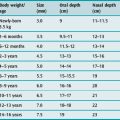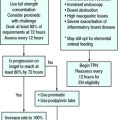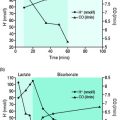
The ketogenic diet has been popular for weight loss, mental clarity, and sustained energy for a while now. Drastically reducing carbohydrate intake and increasing healthy fats can help turn your body into a fat-burning machine. But the results don’t come as quickly as expected for many people. Despite diligently following the basic keto rules, some find themselves plateauing, gaining weight, or experiencing low energy and brain fog.
Keto isn’t just about swapping bread for bacon or cutting carbs cold turkey. There are nuances to the diet that can make or break your progress. Even if you hit your macros and stick to whole foods, you might fall into hidden traps that quietly sabotage your results. The smallest mistakes can create a ripple effect on your metabolism and performance.
If you’ve been scratching your head wondering why keto isn’t working the way you hoped, you’re not alone. Here are five surprising keto traps that may be holding you back, and how to fix them so you can finally unlock the full benefits of your low-carb lifestyle.
Consuming Too Many “Keto-Friendly” Foods
Packaged foods labeled “keto-friendly” are everywhere. They promise low net carbs and sweet indulgences without guilt. But while some can be helpful in moderation, many of these products are highly processed and filled with sugar alcohols, artificial ingredients, and hidden carbs. These additives can spike your blood sugar, disrupt digestion, and leave you craving more.
Even when the nutrition label looks solid, the body doesn’t always react the same way to synthetic ingredients. Maltitol, for example, is a common sweetener in keto snacks that can have a higher glycemic impact than advertised. Regularly eating these snacks can stall weight loss or even cause unexpected weight gain.
You should focus on whole, nutrient-dense foods. Think avocado, eggs, leafy greens, nuts, and clean protein sources. If you do indulge in a packaged treat, read the full ingredient list carefully and track how it affects your energy, mood, and appetite.
Neglecting Electrolyte Balance
When you drastically reduce your carb intake, your insulin levels drop, and your body starts excreting more sodium, potassium, and magnesium. This natural shift in electrolytes is one reason why people experience the dreaded “keto flu” during the first few days. But many people don’t realize this imbalance can persist beyond the transition period.
Low electrolytes can cause fatigue, muscle cramps, headaches, and heart palpitations. These symptoms can quietly wear down your motivation and ability to stay consistent on the diet. Drinking more water alone won’t solve the problem because it can actually dilute your mineral levels even more.
You should make replenishing electrolytes a daily priority. Add a pinch of sea salt to your water, eat potassium-rich foods like spinach and avocado, and consider a high-quality magnesium supplement at night. Supporting your body’s mineral balance ensures better performance, faster recovery, and fewer frustrating side effects as you adapt to ketosis.
Ignoring Your Hunger Signals
One of the core principles of keto is increasing your fat intake, but that doesn’t mean fat should be consumed without limits. Bulletproof coffees, cheese-covered everything, and generous spoonfuls of nut butter can easily push you into a calorie surplus, especially if you’re no longer in tune with your natural hunger cues.
The ketogenic diet is designed to make you more metabolically flexible, meaning your body burns fat efficiently for fuel. But if you continue to overeat, even healthy fats can accumulate as stored energy. Just because something is keto-approved doesn’t mean it can’t lead to weight gain if consumed in excess.
It’s important to eat mindfully and check in with your body. Are you truly hungry, or just snacking out of boredom or habit? Learning to stop when you’re satisfied rather than stuffed can be the difference between slow progress and real transformation. Use fat to fuel, not to mask emotional eating or mindless munching.
Ignoring Glucose Management
Some keto followers experiment with carb cycling or occasional high-carb “refeed” days to boost leptin, support workouts, or overcome plateaus. This can work for certain individuals, but it also introduces the risk of glucose spikes and insulin resistance if done without strategy. And this is where a glucose disposal agent (GDA) supplement can come in handy.
GDAs help your body manage glucose more efficiently. They improve insulin sensitivity and direct carbohydrates into muscle tissue instead of fat storage. If you’re someone who enjoys the occasional carb-up or is transitioning in and out of ketosis, incorporating a GDA supplement may help minimize the metabolic downside.
It’s not a magic pill. The real benefit comes from pairing GDAs with clean, whole-food carbs and post-workout meals, when your body is primed for nutrient uptake. Talk with a healthcare professional before adding any new supplement to your regimen, but don’t overlook the value of metabolic support tools when timing your nutrition.
Failing to Address Stress and Sleep Problems
Even if your macros are perfect, high stress and poor sleep can throw your keto results into chaos. Cortisol can raise blood sugar and promote fat storage. Sleep deprivation alters hunger hormones like ghrelin and leptin, so you’re more likely to overeat and crave carbs.
Many keto dieters focus so intently on food that they forget the lifestyle factors that play a huge role in fat loss and overall health. Chronic stress from work, relationships, or overtraining can quietly sabotage your efforts. Burning the midnight oil every night might prevent your body from fully recovering and regulating metabolism.
Make stress management and quality sleep non-negotiable. Incorporate activities like walking, journaling, or yoga into your routine, and shoot for seven to nine hours of sleep per night in a dark, cool room.
Final Thoughts
The ketogenic diet is a powerful tool, but success requires more than cutting carbs and eating more fat. The little things can quietly derail your progress without you even noticing. From relying on processed keto snacks to skipping electrolytes or overeating fat, these missteps can accumulate over time and leave you frustrated with stalled results.
You can align your efforts with your body’s true needs by learning to recognize and correct these traps. That means staying attuned to your hunger signals and never underestimating the power of rest and stress management. Keto is a flexible framework that can lead to lasting transformation. Ready to get back on track? Start by reviewing your routine with these five areas in mind. You may be one minor adjustment away from your best results yet.







